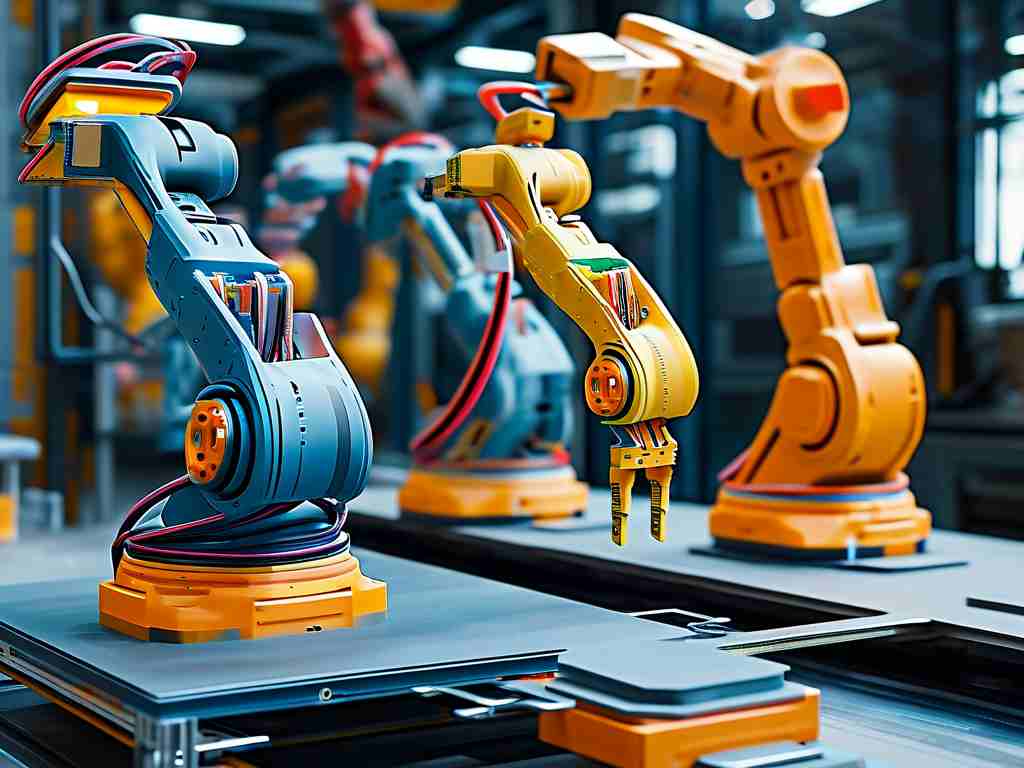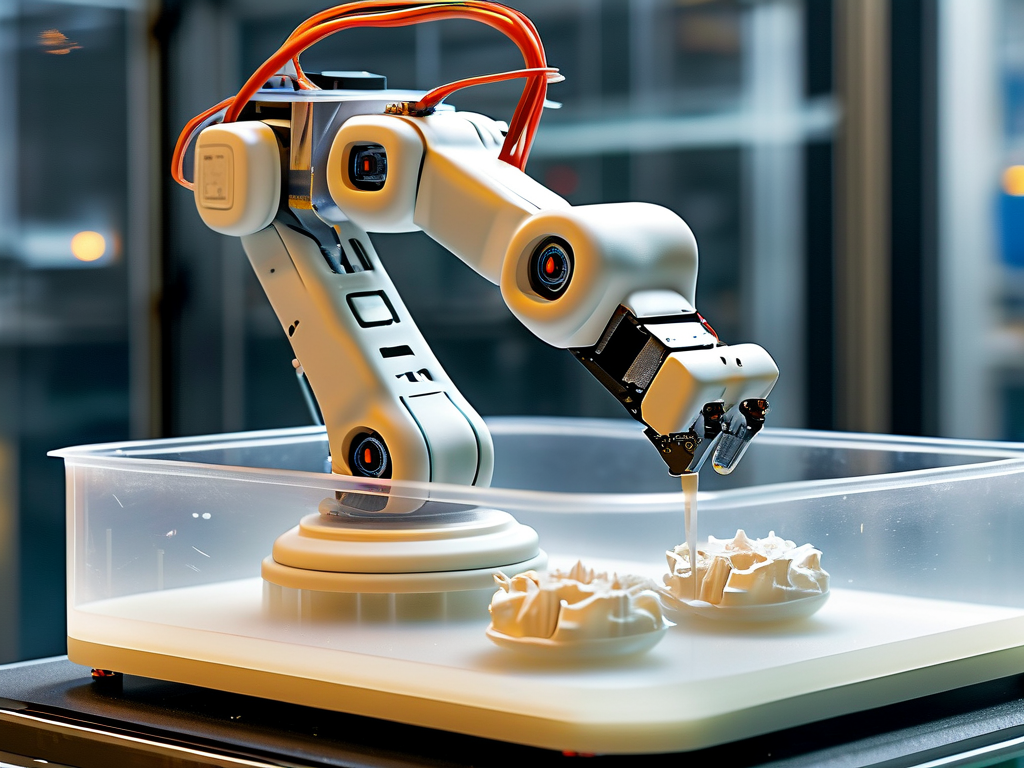The field of robotics is undergoing a quiet revolution, moving away from the rigid metal and plastic frames of traditional machines towards compliant, adaptable structures inspired by nature. At the heart of this shift lies soft robotics printing technology, a rapidly evolving discipline that leverages advanced additive manufacturing techniques to fabricate robots with unprecedented flexibility, safety, and potential for complex functionality. This convergence of soft materials science and sophisticated printing is unlocking possibilities previously confined to science fiction, particularly in delicate environments like healthcare and human interaction.

Traditional manufacturing struggles with the intricate geometries and multi-material compositions essential for effective soft robots. Soft robotics printing overcomes these hurdles by enabling the layer-by-layer deposition of elastomers, hydrogels, liquid crystal elastomers (LCEs), and even functional materials like conductive inks or shape-memory polymers. Techniques such as Direct Ink Writing (DIW), PolyJet printing, Stereolithography (SLA), and Fused Deposition Modeling (FDM) adapted for flexible filaments are being refined specifically for this purpose. The core challenge involves developing printable inks that possess the necessary rheological properties – they must flow smoothly through the printer nozzle yet rapidly solidify or crosslink upon deposition to maintain structural integrity. Materials like silicone elastomers (e.g., Ecoflex), thermoplastic polyurethanes (TPUs), and specialized hydrogels are leading candidates, prized for their elasticity, durability, and biocompatibility.
One of the most significant advantages of printing is the ability to create complex, multi-material structures in a single fabrication run. Imagine a soft gripper printed with rigid segments for mounting, soft, conformable fingers for gentle grasping, and embedded conductive traces within the soft matrix for sensing contact or pressure. PolyJet technology excels here, jetting multiple photopolymer materials simultaneously, allowing voxel-level control over material properties. DIW, often using pneumatic extrusion, can co-print different inks side-by-side or even interwoven, enabling functionally graded materials. This multi-material capability is crucial for embedding functional elements directly during printing. Conductive pathways for sensing and actuation can be printed using silver nanoparticle inks or carbon-based composites. Similarly, channels for pneumatic or hydraulic actuation – the lifeblood of many soft robots – can be intricately designed and printed within the soft body, eliminating complex assembly and potential leak points. Sacrificial materials are often printed alongside the primary structure; these temporary supports (like water-soluble PVA or wax) define complex internal features like pneumatic networks and are later dissolved, leaving behind hollow, functional channels.
Embedded sensing is another frontier. Strain sensors can be printed using piezoresistive materials whose electrical resistance changes predictably with deformation. Capacitive sensors, printed using conductive and dielectric layers, can detect proximity or pressure. Printing allows these sensors to be placed strategically within the soft structure, providing proprioception (sense of self-movement and position) and environmental interaction data crucial for closed-loop control. For example, a printed soft robotic finger might have strain sensors along its length and a capacitive sensor at its tip, providing feedback on its bending angle and whether it has touched an object and how firmly.
The control systems for these printed soft robots often involve sophisticated algorithms interpreting data from their embedded sensors. A simplified conceptual snippet for reading a basic strain sensor might look like:
# Example Pseudocode for Soft Robot Sensor Reading & Basic Actuation
import microcontroller
import analogio
# Initialize analog input pin connected to strain sensor (configured as voltage divider)
strain_pin = analogio.AnalogIn(microcontroller.pin.PA1)
# Function to read normalized strain (0.0 to 1.0)
def read_normalized_strain():
raw_value = strain_pin.value
# Assuming calibration: min_value (no strain), max_value (max expected strain)
normalized = (raw_value - CALIB_MIN) / (CALIB_MAX - CALIB_MIN)
return max(0.0, min(1.0, normalized)) # Clamp to 0-1 range
# Main control loop
while True:
current_strain = read_normalized_strain()
# Simple logic: If strain exceeds threshold, trigger a safety release (e.g., vent pneumatic pressure)
if current_strain > SAFETY_THRESHOLD:
activate_safety_release() # Function to control valve/servo
# More complex control logic would use current_strain in feedback loops for precise actuation...
The applications are vast and transformative. In minimally invasive surgery (MIS), printed soft continuum robots can navigate complex anatomical pathways with minimal tissue damage, potentially integrating tools and sensors at their tip. Wearable rehabilitation devices and prosthetics benefit from printed soft actuators and sensors that conform comfortably to the human body, providing naturalistic movement assistance or sensitive feedback. Exploration robots made from printed soft materials can squeeze through rubble for search and rescue or navigate delicate underwater ecosystems without causing harm. Human-robot collaboration becomes inherently safer with compliant robots that yield upon unexpected contact. Soft printed grippers handle fragile, irregularly shaped objects (fruits, delicate electronics) in logistics and agriculture far more adeptly than rigid counterparts.
Despite immense progress, challenges remain. Printing speed needs improvement for large-scale production. The long-term durability and fatigue resistance of printed soft materials, especially under cyclic actuation, require ongoing research. Achieving high-fidelity, high-resolution printing of complex multi-material structures with seamlessly integrated, reliable functional elements is still a work in progress. Developing efficient, compact, and portable power and control systems for untethered soft robots is another critical hurdle. Furthermore, the field needs standardized design tools and simulation platforms specifically tailored for the non-linear mechanics of soft, printed structures.
Looking ahead, research focuses on intelligent material systems like 4D printing (where printed structures change shape autonomously in response to stimuli like heat or moisture) and the integration of artificial intelligence for real-time adaptive control of these inherently complex systems. Sustainable and biodegradable printable materials are also gaining traction. As soft robotics printing technology matures, overcoming its current limitations, it promises to fundamentally reshape robotics, leading to machines that are not just tools, but adaptable, safe partners interacting seamlessly with humans and the natural world. The ability to literally "print" functionality into soft matter opens a design paradigm with vast, untapped potential.


